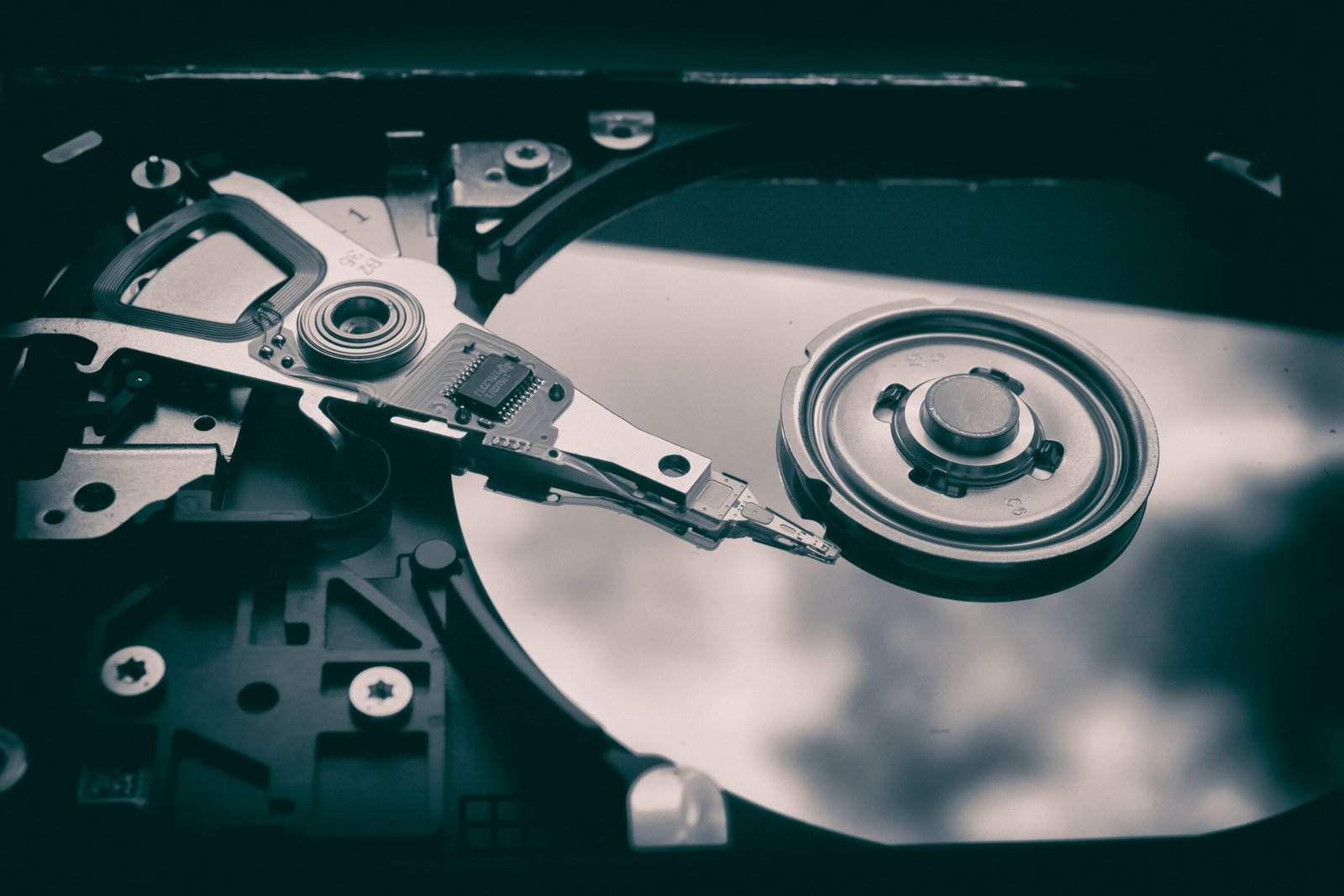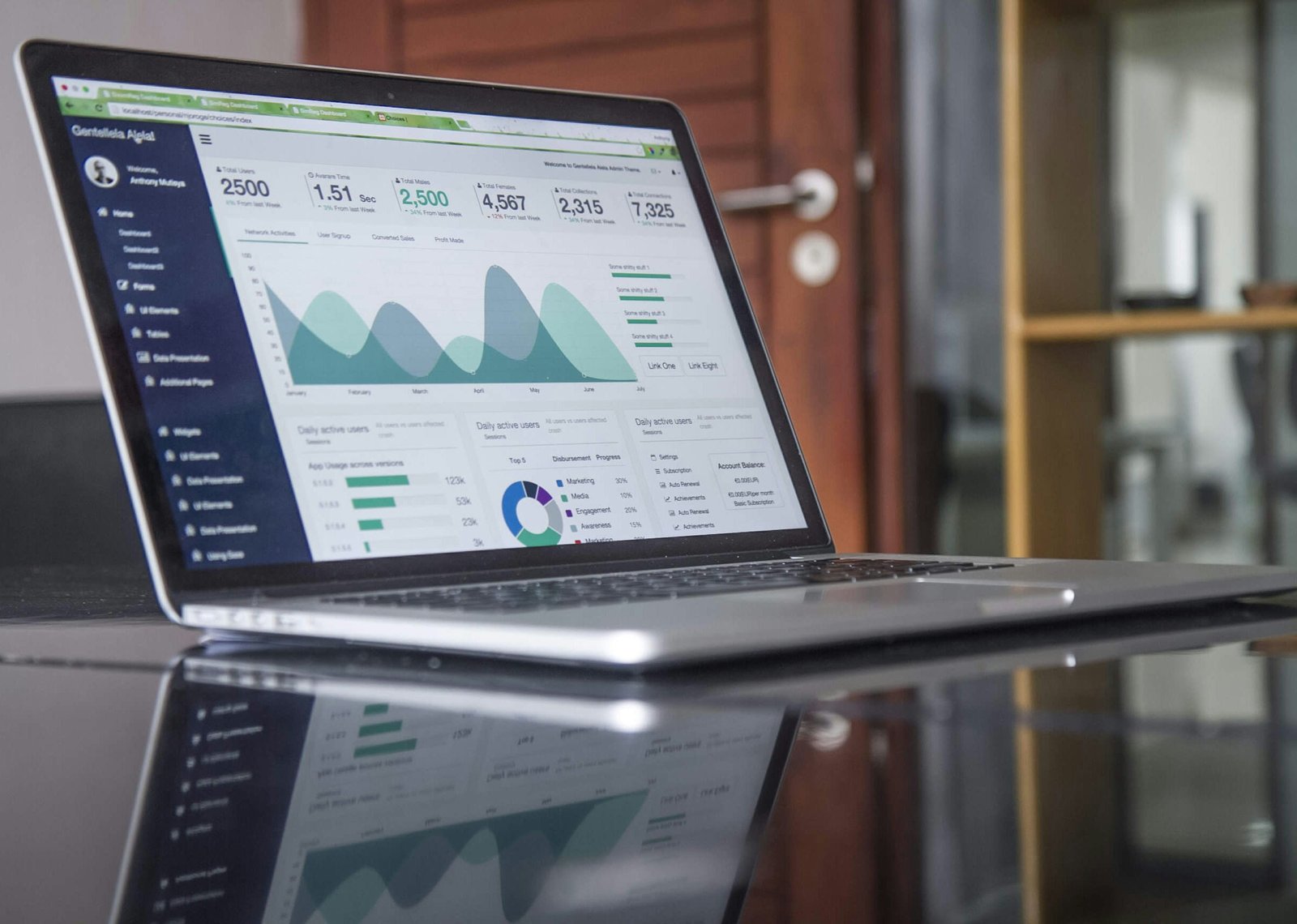Technology
Understanding Granular Recovery Technology: A Comprehensive Guide

Introduction to Granular Recovery Technology
Granular Recovery Technology (GRT) represents a significant advancement in the realm of data backup and recovery. Unlike traditional backup methods, which generally involve restoring entire systems or large data sets, GRT allows for the precise recovery of specific items. This capability means that instead of restoring an entire database or file system, administrators can selectively restore individual emails, specific files, or particular database records.
The importance of granular recovery technology in data management cannot be overstated. In today’s data-driven world, the ability to quickly and accurately restore specific pieces of information can save organizations both time and resources. For instance, if an employee accidentally deletes an important email or a critical document is corrupted, GRT enables the recovery of just that single item, without the need to perform a full-scale data restoration. This precision greatly enhances operational efficiency and minimizes downtime.
Furthermore, the efficiency of GRT extends beyond mere data recovery. By allowing for targeted restorations, GRT reduces the storage and processing requirements typically associated with full-system backups. This means that organizations can maintain leaner, more cost-effective backup solutions, all while ensuring that critical data remains easily retrievable. The selective nature of granular recovery also simplifies the backup process, making it easier for IT teams to manage and execute data protection strategies.
In essence, granular recovery technology brings a new level of precision and efficiency to data recovery operations. By facilitating the restoration of individual items rather than entire data sets, GRT not only streamlines the recovery process but also significantly reduces the potential for data loss and operational disruptions. As such, it stands as a crucial tool for modern data management and recovery practices.
How Granular Recovery Technology Works

Granular Recovery Technology (GRT) is a sophisticated approach to data recovery that allows for the precise restoration of specific data items without the need to recover entire datasets. This is achieved through a combination of advanced mechanisms including metadata indexing, snapshot technology, and data deduplication.
Metadata indexing is fundamental to GRT. It involves creating detailed indexes that map data locations within a storage system. These indexes provide a quick reference, enabling the recovery system to locate and restore specific files or items efficiently. By keeping a detailed record of where every piece of data resides, metadata indexing ensures that searches are both rapid and accurate.
Snapshot technology is another critical component of GRT. Snapshots are essentially point-in-time copies of data. They capture the state of a system at a specific moment, allowing for instantaneous recovery if needed. By leveraging these snapshots, GRT can restore individual files or emails to their exact state at the time the snapshot was taken, without affecting the rest of the system.
Data deduplication further enhances the efficiency of granular recovery. This process identifies and eliminates redundant copies of data, storing only unique instances. By reducing the volume of data that needs to be recovered, deduplication makes the recovery process faster and less resource-intensive. This is particularly beneficial in environments with large volumes of data, such as email systems, virtual environments, and databases.
For example, in email systems, GRT can restore a single email from a user’s mailbox without restoring the entire mailbox. In virtual environments, it can recover a specific virtual machine file without needing to revert an entire virtual machine to a previous state. In database management, GRT allows for the restoration of individual database records or tables, ensuring minimal disruption to ongoing operations.
By integrating metadata indexing, snapshot technology, and data deduplication, Granular Recovery Technology provides a robust solution for targeted data recovery, significantly reducing downtime and enhancing operational efficiency.
Benefits of Granular Recovery Technology

Granular Recovery Technology (GRT) stands out as a significant advancement in the field of data recovery due to the numerous benefits it offers. One of the foremost advantages is the enhancement in data recovery speed. Traditional recovery methods often require a full backup restoration, which can be time-consuming and resource-intensive. In contrast, GRT allows for the restoration of individual items, such as emails, files, or database records, without the necessity of a comprehensive backup restoration. This targeted approach drastically reduces the time required to recover critical data, thereby improving overall operational efficiency.
Another key benefit of GRT is its potential to reduce storage costs. By enabling selective restoration of data, organizations can avoid the need to maintain and manage large volumes of redundant backup data. This not only optimizes storage usage but also translates into cost savings by minimizing the need for expansive storage infrastructure and reducing associated maintenance costs.
Furthermore, Granular Recovery Technology enhances data management efficiency. The ability to restore specific items on demand means that IT teams can quickly address data loss incidents without disrupting the entire system. This flexibility supports better data management practices, allowing organizations to maintain continuous operations and reduce downtime.
GRT also plays a crucial role in supporting compliance and data governance. In today’s regulatory environment, organizations are often required to produce specific data for audits, legal proceedings, or internal reviews. GRT’s precise recovery capabilities ensure that relevant data can be retrieved quickly and accurately, facilitating adherence to compliance requirements and improving the organization’s overall data governance posture.
In summary, the benefits of Granular Recovery Technology are manifold. By enhancing recovery speed, reducing storage costs, improving data management efficiency, and supporting compliance efforts, GRT proves to be a valuable tool for modern organizations seeking to optimize their data recovery processes.
Implementing Granular Recovery Technology

Implementing granular recovery technology (GRT) within an organization’s data management strategy requires careful planning and preparation. One of the initial steps is ensuring that the existing backup software is compatible with GRT. Many modern backup solutions come with integrated support for granular recovery, but it is essential to verify this compatibility to avoid any disruptions. Additionally, the hardware infrastructure must be capable of supporting the increased data processing demands that GRT typically entails. This often involves ensuring that storage systems have ample capacity and that network bandwidth is sufficient to handle data recovery operations efficiently.
Once the prerequisites are in place, setting up and configuring GRT involves a series of best practices aimed at maximizing data integrity and security. Start by defining clear recovery point objectives (RPOs) and recovery time objectives (RTOs) to align the GRT setup with organizational goals. Establishing a robust backup schedule is crucial, ensuring that backups are performed regularly and that data snapshots are stored in a secure, redundant manner. Additionally, it is vital to implement strong encryption protocols to protect data during both storage and transmission phases.
Organizations may encounter several challenges during the implementation phase of granular recovery technology. One common issue is the initial complexity of configuring GRT settings, which can be mitigated by thorough documentation and, if available, vendor support. Another challenge is maintaining data consistency and preventing corruption, which necessitates periodic integrity checks and validations. To address these challenges, it’s beneficial to provide training for the IT staff responsible for managing the GRT system, ensuring they are well-versed in troubleshooting and best practices.
For ongoing maintenance and optimization of GRT systems, regular audits and performance assessments are recommended. These evaluations can help identify potential bottlenecks and areas for improvement, ensuring that the GRT setup continues to meet organizational needs efficiently. Keeping backup software and hardware firmware up-to-date is also critical in maintaining optimal performance and security. By adhering to these guidelines and continuously monitoring the system, organizations can leverage granular recovery technology to enhance their data management capabilities effectively.\
Before Ending, I’ve noticed your interest in Our Blog. We have covered the topic “How to Shutdown Your iPad Air: A Step-by-Step Guide,” which you can explore on our blog.
Technology
Geekzilla.tech Honor Magic 5 Pro – A Complete Overview

Introduction to Geekzilla.tech Honor Magic 5 Pro
The Geekzilla.tech Honor Magic 5 Pro emerges as a standout in the realm of modern smartphones, making a substantial impact with its advanced features and sophisticated design. As one of the latest offerings from Tech, this device is crafted to cater to both tech enthusiasts and everyday users seeking a blend of functionality and style.
What sets the Geekzilla.tech Honor Magic 5 Pro apart from its competitors is a suite of innovative features. Among these, the device boasts a cutting-edge camera system, capable of capturing stunningly detailed photos and videos, making it a perfect companion for both amateur and professional photographers. Additionally, its robust processing power ensures smooth performance, whether for gaming, multitasking, or running intensive applications.
The design of the Geekzilla.tech Honor Magic 5 Pro is equally impressive. This smartphone is not just a piece of technology but also a style statement. Its sleek and bright appearance is complemented by a high-quality finish that appeals to even the most discerning consumers. The ergonomic design ensures that the device feels comfortable in hand, while the vibrant display offers an immersive viewing experience.
Overall, the Geekzilla.tech Honor Magic 5 Pro represents a confluence of innovation and elegance. Its place in the market is solidified by its ability to meet the demands of users who prioritize both performance and aesthetics. As we delve deeper into its features and capabilities, it becomes evident why this smartphone is gaining traction among a diverse user base.
Technical Specifications of Geekzilla.tech Honor Magic 5 Pro

The Geekzilla.tech Honor Magic 5 Pro stands out with its impressive technical specifications, making it a formidable contender in the smartphone market. Boasting a 6.7-inch OLED display, the device offers a resolution of 1440 x 3200 pixels. This ensures vibrant colors and sharp visuals, ideal for both multimedia consumption and professional tasks.
Under the hood, the Geekzilla.tech Honor Magic 5 Pro is powered by the latest Snapdragon 8 Gen 1 processor. This powerhouse chipset is paired with up to 12GB of RAM, ensuring smooth multitasking and robust performance. Storage options are generous, with configurations ranging from 128GB to 512GB, catering to varying user needs without the necessity for external storage solutions.
Photography enthusiasts will appreciate the advanced camera setup of the Geekzilla.tech Honor Magic 5 Pro. The rear camera array includes a 108MP primary sensor, a 16MP ultra-wide-angle lens, and an 8MP periscope telephoto lens, capable of 5x optical zoom. This combination allows for high-quality photo and video capture in diverse settings. The front camera doesn’t disappoint either, featuring a 32MP sensor perfect for selfies and video calls.
Battery life is another strong suit of the Geekzilla.tech Honor Magic 5 Pro. Equipped with a 5000mAh battery, the device supports 66W fast charging, ensuring minimal downtime. Additionally, the smartphone supports 50W wireless charging, adding to its convenience.
On the software front, the Geekzilla.tech Honor Magic 5 Pro runs on Magic UI 6.0 based on Android 12. This provides a seamless user experience, with a host of customization options and productivity features. Connectivity is well-covered with 5G support, Wi-Fi 6, Bluetooth 5.2, and NFC, ensuring the device is future-ready.
Overall, the Geekzilla.tech Honor Magic 5 Pro offers a comprehensive suite of features that cater to high-end users, making it a compelling choice in the premium smartphone segment.
Key Features and Innovations

The Geekzilla.tech Honor Magic 5 Pro distinguishes itself through a combination of advanced technologies and innovative features that set new standards in the smartphone industry. One of the standout elements is its cutting-edge camera system. Equipped with a quad-camera setup, the Geekzilla.tech Honor Magic 5 Pro offers exceptional photographic capabilities, blending high-resolution sensors with AI enhancements to deliver stunning images in various lighting conditions. The camera’s ultra-wide angle, telephoto lens, and macro capabilities ensure versatile photography options, catering to both amateur and professional photographers.
Another key innovation is the smartphone’s unique display characteristics. The Honor Magic 5 Pro features a 6.7-inch OLED display with a 120Hz refresh rate, providing a seamless and vibrant visual experience. The high refresh rate coupled with HDR10+ support ensures fluidity in motion and rich color accuracy, making it ideal for gaming, streaming, and everyday use. The display also incorporates an under-display fingerprint sensor, enhancing security while maintaining a sleek, uninterrupted screen design.
Enhanced security features are another highlight of the Geekzilla.tech Honor Magic 5 Pro. Beyond the under-display fingerprint sensor, the device includes advanced facial recognition technology, ensuring secure and quick access. Furthermore, the integration of a dedicated security chip safeguards sensitive data, reinforcing the phone’s robust security framework.
Performance is at the core of the Honor Magic 5 Pro’s user experience, powered by the latest chipset and ample RAM, the device handles multitasking and resource-intensive applications with ease. The inclusion of 5G connectivity ensures faster download and upload speeds, contributing to a smoother and more efficient online experience.
Incorporating these advanced features, the Geekzilla.tech Honor Magic 5 Pro not only meets but exceeds the expectations of modern smartphone users. The combination of superior camera technology, an immersive display, enhanced security, and high performance, collectively enriches the overall user experience, making it a standout choice in the competitive smartphone market.
Advantages of Joining the Geekzilla Community

Becoming a member of the Geekzilla community offers numerous advantages, particularly for those interested in the latest technological innovations like the Honor Magic 5 Pro. One of the primary benefits is exclusive access to the most recent updates and information. As a member, you will receive timely notifications about software updates, new features, and troubleshooting tips, ensuring that your Honor Magic 5 Pro is always running at its best.
Another significant advantage is the support from a community of tech enthusiasts. The Geekzilla community comprises individuals who share a passion for technology and are always eager to share their knowledge and experiences. This collective wisdom can be incredibly beneficial when you encounter any issues or have questions about your Honor Magic 5 Pro. Whether you’re troubleshooting a problem or looking for advice on optimizing your device, the community is an invaluable resource.
Membership also brings potential discounts and special offers. Geekzilla often collaborates with manufacturers and retailers to provide members with exclusive deals on the latest gadgets, including the Honor Magic 5 Pro. These discounts can make a substantial difference, especially when purchasing premium devices or accessories.
Additionally, being part of Geekzilla means you are always in the loop when it comes to future innovations. The community frequently discusses upcoming technology trends, potential product launches, and reviews of new gadgets. Staying informed about these developments can help you make more educated purchasing decisions and ensure that you are always ahead of the curve.
Conclusion
Overall, joining the Geekzilla community can significantly enhance your experience with the Honor Magic 5 Pro. From exclusive updates and community support to potential discounts and staying informed about future innovations, the benefits are extensive. Becoming a member not only helps you get the most out of your current device but also keeps you well-prepared for the technological advancements to come.
Before Ending, I’ve noticed your interest in Our Blog. We have covered the topic “Understanding Granular Recovery Technology: A Comprehensive Guide,” which you can explore on our blog.
Technology
Understanding Capture Portals: A Comprehensive Guide

Introduction to Capture Portals
Capture portals, often referred to as “captive portals,” serve as a gateway that intercepts and controls network access until the user complies with specific conditions laid out by the network administrator. Essentially, these portals require users to authenticate themselves before gaining access to a network, be it through a login page, an acceptance of terms and conditions, or other verification methods. This process ensures that only authorized individuals can utilize the network resources, thereby enhancing security and management capabilities.
The concept of capture portals is widely implemented across various industries, each leveraging its unique capabilities to address specific needs. In the telecommunications sector, capture portals facilitate user identification and service customization, allowing telecom providers to offer tailored experiences based on user profiles and preferences. In the realm of cybersecurity, these portals act as a crucial checkpoint to prevent unauthorized access, safeguarding sensitive data and network integrity from potential threats. Furthermore, capture portals are extensively utilized in customer engagement strategies, particularly in public Wi-Fi settings such as hotels, cafes, and airports. By redirecting users to a branded login page, businesses can not only control access but also engage with customers through promotions, surveys, or advertisements, thereby enhancing user experience and loyalty.
Understanding the basic framework and applications of capture portals is essential for comprehending their broader implications and benefits. As we delve deeper into the technical and operational aspects of capture portals in subsequent sections, it will become evident how these systems contribute to effective network management, security fortification, and enhanced user interaction. Whether you are an IT professional, a business owner, or simply a curious reader, grasping the foundational elements of capture portals will illuminate their indispensability in today’s interconnected world.
How Capture Portals Work

Capture portals, often referred to as captive portals, operate through a combination of network redirects, authentication processes, and data capture mechanisms. These elements work in unison to manage and control user access to network resources. Let’s break down the key components and technologies that make capture portals function effectively.
First, when a user attempts to access the internet through a network that employs a capture portal, their device is redirected to a specific web page. This redirection is usually achieved through DNS hijacking or HTTP redirects. The capture portal intercepts the user’s web request and reroutes it to the authentication page, preventing access to other web pages until the required actions are completed.
The authentication process is central to the operation of a capture portal. Users are typically prompted to log in using credentials, which could range from a simple email address to more secure methods like username and password combinations or even two-factor authentication. This step ensures that only authorized individuals gain access to the network, enhancing security and managing bandwidth usage.
Data capture mechanisms are also a crucial part of capture portals. These mechanisms collect and store user information, such as browsing behavior, login times, and device details. This data can be invaluable for network administrators, allowing them to monitor usage patterns, enforce policies, and enhance overall network performance.
From a user’s perspective, the experience of interacting with a capture portal typically begins with connecting to the network, followed by the redirection to the authentication page. Once authenticated, users are granted the desired level of access, often accompanied by a welcome message or usage guidelines. The entire process is designed to be as seamless as possible, ensuring minimal disruption while maintaining network security.
In summary, the effective operation of capture portals relies on the integration of network redirects, robust authentication processes, and comprehensive data capture mechanisms. These elements together create a secure and manageable network environment, catering to both user convenience and administrative control.
Benefits and Challenges of Using Capture Portals

Capture portals offer a range of advantages that cater to both businesses and users. One of the primary benefits is enhanced security. By requiring users to authenticate before granting access, capture portals can significantly reduce unauthorized access and potential security breaches. This added layer of security is particularly valuable in environments such as corporate offices, educational institutions, and public Wi-Fi hotspots, where data security is paramount.
Another notable benefit is improved user data collection. Capture portals provide an effective means for businesses to gather valuable user information, such as email addresses and demographic details, which can be leveraged for targeted marketing campaigns and personalized user experiences. This data-driven approach enables businesses to better understand their audience and tailor their services accordingly, ultimately driving user engagement and satisfaction.
Additionally, capture portals can enhance user engagement by offering a customized and interactive experience. For instance, businesses can use capture portals to present users with promotional content, surveys, or relevant updates, fostering a more engaging and dynamic interaction. This not only increases user retention but also helps in building a loyal customer base.
Despite these benefits, there are several challenges associated with the implementation of capture portals. Privacy concerns are a significant issue, as users may be wary of sharing their personal information. Transparency about data usage and robust privacy policies are essential to mitigate these concerns and build user trust.
User frustration is another potential drawback. If the capture portal process is overly cumbersome or intrusive, it can lead to negative user experiences and deter users from accessing the service. Ensuring a seamless and user-friendly interface is crucial to minimizing frustration and maintaining a positive perception.
The technical complexity of setting up and maintaining capture portals can also pose challenges. Businesses need to invest in the necessary infrastructure and expertise to ensure a smooth operation. Regular updates and maintenance are required to keep the system secure and efficient, which can be resource-intensive.
Real-world examples highlight these points. For instance, a university implemented a capture portal to secure its campus Wi-Fi. While it successfully enhanced security and collected valuable student data, initial user feedback indicated frustration with the login process. The university addressed this by simplifying the interface and providing clear instructions, resulting in improved user satisfaction.
In conclusion, while capture portals offer significant benefits in terms of security, data collection, and user engagement, they also present challenges that require careful consideration and management. Balancing these factors is key to the successful implementation of capture portals.
Future Trends and Innovations in Capture Portals

As technology continues to evolve at a rapid pace, the landscape of capture portals is poised for significant advancements. One of the most promising trends is the integration of artificial intelligence (AI) and machine learning (ML) to enhance the functionality and user experience of capture portals. By leveraging AI and ML, these systems can become smarter and more intuitive, capable of learning from user interactions to provide more personalized and efficient experiences. For instance, AI-powered capture portals can predict user needs, streamline data processing, and reduce the time required for tasks, thereby increasing overall productivity.
In addition to AI and ML, innovations in security measures are also shaping the future of capture portals. With the increasing prevalence of cyber threats, robust security features have become paramount. Emerging technologies such as blockchain and advanced encryption methods are being integrated into capture portals to ensure data integrity and protect against unauthorized access. These security enhancements not only safeguard sensitive information but also build trust among users and stakeholders.
User interface (UI) design is another area where capture portals are set to see significant improvements. The goal is to create more user-friendly and accessible interfaces that cater to a diverse range of users. This includes the implementation of responsive design principles, ensuring that capture portals are seamlessly accessible across various devices and screen sizes. Additionally, the use of natural language processing (NLP) can facilitate more intuitive interactions, allowing users to engage with the portal using everyday language.
Looking ahead, the potential applications of capture portals are expanding into new industries and sectors. From healthcare to finance, and from education to government services, the versatility of capture portals is being recognized and leveraged. For example, in healthcare, capture portals can streamline patient data management, while in education, they can enhance e-learning platforms by providing seamless access to educational resources.
Expert opinions and forecasts suggest that capture portals will continue to evolve, driven by technological advancements and user demands. As these systems become more sophisticated, they will not only enhance operational efficiency but also open up new possibilities for innovation across various fields. The future of capture portals is undoubtedly bright, with endless opportunities for growth and development on the horizon.
Before Ending, I’ve noticed your interest in Our Blog. We have covered the topic “Understanding Granular Recovery Technology: A Comprehensive Guide,” which you can explore on our blog.
Technology
Understanding Single Source Technologies: Revolutionizing Data Management

Introduction to Single Source Technologies
In today’s increasingly data-driven world, managing vast amounts of information efficiently has become paramount for organizations across various industries. Single source technologies have emerged as a revolutionary solution to address the complexities and challenges posed by traditional multi-source data systems. These technologies provide a consolidated and unified framework, ensuring that all data originates from a single, authoritative source. This concept, often referred to as a single source of truth, is critical for maintaining data accuracy, consistency, and efficiency within an organization.
The evolution of data management practices has seen a significant shift from disparate data silos to more integrated systems. In the past, organizations relied on multiple data sources, each potentially housing conflicting or outdated information. This fragmented approach often led to inefficiencies, data discrepancies, and increased operational risks. Single source technologies offer a streamlined alternative by centralizing data management, which simplifies data governance and reduces the potential for errors.
Key benefits of adopting single source technologies include enhanced data accuracy, as all users across the organization access and work with the same set of information. This uniformity reduces the likelihood of miscommunication and ensures that decisions are based on the most current and reliable data available. Additionally, data consistency is significantly improved, as the centralized approach minimizes the inconsistencies that can arise from using multiple sources. Efficiency is another critical advantage, as a single source of truth eliminates redundant data entry and reduces the time spent reconciling conflicting information.
By setting the stage with a strong foundation of single source technologies, organizations can better leverage their data assets, driving more informed decision-making and unlocking new opportunities for growth and innovation. This introduction paves the way for a detailed exploration of specific examples and applications of these technologies, which will be discussed in the subsequent sections of this blog post.
Key Components and Architecture of Single Source Technologies

Single source technologies represent a pivotal solution in modern data management by ensuring that organizations have a single, authoritative source of truth for their data. At the core of these technologies are several key components and a robust architecture that collectively streamline the collection, storage, and retrieval of data.
Centralized databases form the backbone of single source technologies. These databases consolidate data from various disparate sources into a single repository, making it easier to manage and access information. Data warehouses and data lakes are prime examples of centralized databases. Data warehouses are optimized for query and analysis, providing structured storage of large volumes of data, whereas data lakes store vast amounts of raw data in its native format until needed for analysis. Both serve critical roles in ensuring data centralization and accessibility.
Another crucial component is data integration tools. These tools facilitate the seamless merging of data from multiple sources into the centralized database. They ensure that data is consistently and accurately integrated, maintaining the integrity and coherence of the information. ETL (Extract, Transform, Load) tools are commonly used for this purpose, extracting data from various sources, transforming it into a suitable format, and loading it into the central repository.
Data governance frameworks are essential in maintaining the quality and security of the data within single source technologies. These frameworks establish policies, procedures, and standards for data management, ensuring compliance and safeguarding against data breaches. Master Data Management (MDM) systems are a vital part of data governance, providing a consistent and accurate view of critical business data across the organization.
Popular platforms and tools that embody single source technologies include Amazon Redshift, Google BigQuery, and Microsoft Azure Synapse Analytics for data warehousing, as well as Apache Hadoop and AWS Lake Formation for data lakes. These platforms offer comprehensive solutions for centralized data management, integrating a range of functionalities from data ingestion to advanced analytics.
Collectively, these components and the architecture of single source technologies ensure that organizations can efficiently manage their data, providing a unified and reliable data source that supports informed decision-making and operational efficiency.
Applications and Use Cases of Single Source Technologies

Single source technologies have found widespread applications across various industries, each leveraging the technology to streamline operations, improve data integrity, and facilitate data-driven decision-making. In the healthcare sector, single source technologies are revolutionizing patient data management. For example, electronic health record (EHR) systems consolidate patient information from multiple sources into a single, cohesive database. This not only enhances the accuracy of patient records but also enables healthcare providers to deliver more personalized and efficient care.
In the finance industry, single source technologies are pivotal in managing vast amounts of transaction data. Financial institutions utilize these technologies to maintain a unified data repository, which is crucial for tasks such as fraud detection and risk management. By having a centralized data source, banks can more accurately monitor transactions and identify suspicious activities in real-time, thereby improving regulatory compliance and ensuring the security of customer assets.
Retail companies are also harnessing the power of single source technologies for customer relationship management (CRM). By integrating data from various touchpoints such as in-store purchases, online transactions, and customer service interactions, retailers can construct a comprehensive view of customer behavior and preferences. This holistic approach allows for more targeted marketing strategies, personalized shopping experiences, and ultimately, increased customer loyalty and sales.
In the manufacturing sector, single source technologies play a crucial role in supply chain management. Companies can track and manage every component of their supply chain from a single platform, ensuring real-time visibility and coordination across all stages of production and distribution. This not only improves operational efficiency but also reduces costs by minimizing delays and optimizing inventory levels.
Moreover, regulatory compliance is another critical area where single source technologies are making a significant impact. Organizations across various industries must adhere to stringent regulatory requirements, and maintaining a single, accurate source of data helps ensure compliance. This is particularly important in industries such as pharmaceuticals and finance, where the cost of non-compliance can be substantial.
Overall, the adoption of single source technologies enables organizations to make well-informed, data-driven decisions, streamline operations, and maintain a competitive edge in their respective markets. By providing a unified and reliable data repository, these technologies are transforming the way businesses operate and manage their information.
Challenges and Future Trends in Single Source Technologies

Implementing single source technologies can present various challenges, primarily revolving around data integration complexity, high initial setup costs, and the need for ongoing maintenance and governance. Data integration complexity arises from the need to harmonize disparate data sources into a cohesive system. Organizations often struggle with differing data formats, legacy systems, and inconsistent data quality. To mitigate these issues, employing robust data integration tools and establishing clear data governance frameworks are crucial steps. These approaches ensure that data from different sources is consistently cleaned, transformed, and loaded into the single source system, maintaining data integrity and reliability.
High initial setup costs are another significant hurdle. The investment required for sophisticated single source technologies can be substantial, encompassing software acquisition, hardware upgrades, and personnel training. However, the long-term benefits of streamlined data management and enhanced decision-making capabilities often outweigh the initial expenditure. To manage costs, organizations can consider phased implementation, prioritizing critical components first and gradually expanding the system’s capabilities.
Ongoing maintenance and governance are essential to sustain the effectiveness of single source technologies. Regular updates, security patches, and continuous monitoring are necessary to address evolving business needs and technological advancements. Implementing automated monitoring tools and establishing a dedicated team for system upkeep can ensure the system remains robust and secure over time.
Looking ahead, the integration of artificial intelligence (AI) and machine learning (ML) is poised to revolutionize single source technologies. These advanced technologies can automate data management processes, such as data cleansing, anomaly detection, and predictive analytics, significantly reducing manual intervention and improving data accuracy. Additionally, the growing importance of cloud-based solutions offers scalable and flexible alternatives to on-premises systems, allowing organizations to leverage the latest innovations without significant infrastructure investments.
As single source technologies continue to evolve, they will undoubtedly shape the future of data management, enabling organizations to harness the full potential of their data and drive informed decision-making.
Before Ending, I’ve noticed your interest in Our Blog. We have covered the topic “Understanding Granular Recovery Technology: A Comprehensive Guide,” which you can explore on our blog.
-

 Entertainment5 months ago
Entertainment5 months agoWhat is Masqlaseen? A Complete Overview
-

 Entertainment4 months ago
Entertainment4 months agoWhat is Moye Moye? Understanding the Serbian Phrase and its Meaning
-

 Entertainment4 months ago
Entertainment4 months agoWhat is soymamicoco? A Complete Guide
-

 Entertainment3 months ago
Entertainment3 months agoIs Ztec100.com Your One-Stop Shop for Digital Solutions?
-

 Entertainment4 months ago
Entertainment4 months agoWhat is 06shj06? – Uncover The Mystery
-

 Technology3 months ago
Technology3 months agoWhat is an XCV Panel? A Guide to Its Uses and Benefits
-

 Entertainment4 months ago
Entertainment4 months agoWho is Elon Musk? – Unveiling the Visionary Entrepreneur
-

 Business4 months ago
Business4 months agoWhat is Roadget Business?




